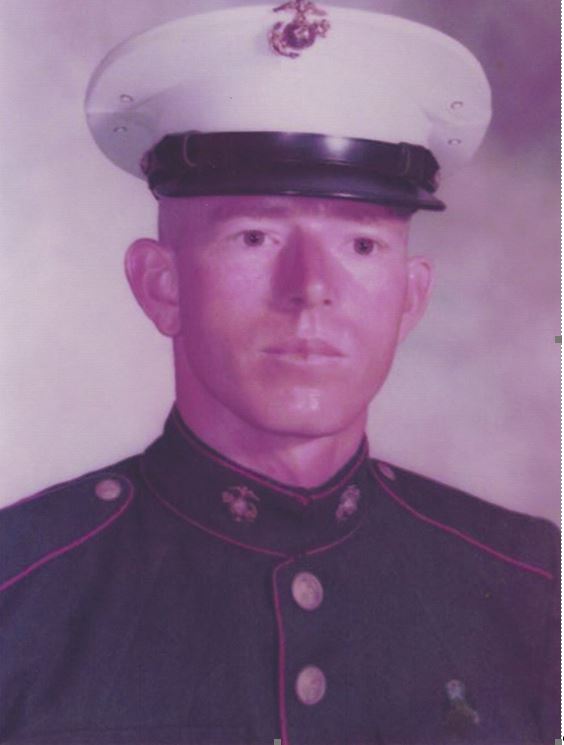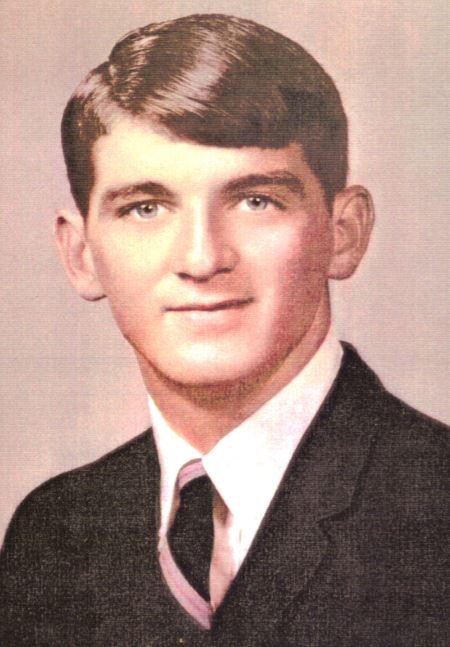Lynn Sadler
Burlington, North Carolina, United States
War alters, shapes, and re-shapes far different ends even for members of the same family. Clarence Leon (“Boone”) McNeill (1947-1969) and Joseph Nelson Hargrove (1951-1975) are illustrative not only in that telling way but also salute the tenacity of Americans in honoring their veterans. Their names are inscribed on the Vietnam Veterans Memorial (“The Wall”)—Panel 33W, Line 66, and Panel 01W, Line 130, respectively. That is not the only way they have been remembered and honored.
Boone grew up in the small town of Warsaw (Duplin County, NC), which has celebrated Veterans (now Armistice) Day since 1921, a record for the longest continuously held such event in America. His brother was the first in the county, also home to Joseph (and to my husband and me) to become a general; Dan Kelly McNeill retired in 2008 as Commander of NATO forces in Afghanistan. He, Boone, and Joseph would have shared similar childhoods and probably attended Armistice Day Parades and visited the carnival that always came to town as part of the celebrations. Boone was a Boy Scout, played Little League baseball, was on the high school football and baseball teams, worked in tobacco in the summers . . . .
In 1966 Boone enlisted in the Air Force. He received basic training at Lackland Air Force Base; attended the Defense Language Institute at the Presidio in Monterey for some nine months of learning Vietnamese; and completed Survival Evasion Resistance Escape School at Fairchild Air Force Base in Spokane. In the largest sense, of course, Boone did not escape.
First came the 6994th Security Squad, 7th Air Force, an intelligence unit at Kadena Air Force Base, Okinawa. It was sent to South Vietnam until assigned full-time to Pleiku Air Base, Republic of Vietnam.
An Airborne cryptologic linguist, Boone arrived in Vietnam on May 28, 1968. His unit flew radio signal intercept missions in an EC-47, a fixed-wing DC-3 outfitted with a suite of radios in the cargo compartment and used for reconnaissance, surveillance, and intelligence. On a mission over the Ho Chi Minh Trail, at night, February 4-5, 1969, a ground-fired missile hit his aircraft. It crashed in Laos, killing Boone and the nine other crew members. He was twenty-one and had been in the Air Force a year and a half and in Vietnam just over eight months.
The entire crew was listed as MIA until international cooperation intervened. In September 1969, a friendly patrol—from a Laotian commando unit—discovered the crash site and supplied items to United States authorities present in Laos. An American patrol went in, recovered the human remains, and found data positively identifying CAP 72, the mission call sign.
In the Air Force, Boone’s closest friends were those in that EC-47. The ten were buried in a common grave in the National Cemetery at Jefferson Barracks, Missouri.
Posthumously, Boone was promoted to Sergeant (SGT) (E-4). His decorations and awards included the Distinguished Flying Cross, a Purple Heart for wounds received from a rocket attack on Pleiku Air Base, an Air Medal, a Republic of Vietnam Campaign Medal and Vietnam Service Medal, and a second Purple Heart for the crash that killed him.
A United States conference and communications facility (Hokkaido Island, Japan), believed the largest such center in the world, was named for Boone. The 301stSecurity Squadron at Misawa Air Base renamed its auditorium for him. In 2004 an enlisted housing dormitory at Ft. Meade, Maryland, was re-designated McNeill Hall in his memory.
Boone’s tour of duty in Vietnam was scheduled to be completed in May 1969. He had spent some time in college prior to joining the Military. In late 1968, he successfully competed for an appointment to the Air Force Academy Class of 1973 and was scheduled to enter in June 1969 and study in Colorado Springs.
In 2014, some forty-six years later, scientific and medical advances in DNA techniques identified at least some of that mingled crew. Boone’s remains were re-buried in his hometown (and mine) next to his parents (who were friends of my own).
Joseph’s death and what happened to his remains are enigmatical. He was born in Beautancus, near Faison (and Warsaw), to Duplin County natives, and his father served in the Army. Joseph played sports, hunted, fished, and went to Sunday School and Bible School. He attended Faison Elementary School (c. 1957-65) and North Duplin High School (August 1966-May 1967) but quit school at about age sixteen to work for neighboring farmers. He listed his occupation as carpenter. In February 1975, he married Gail Davis. (Boone never married.) They had no children, and his widow did not remarry.
 |
 |
“Boone” McNeill and Joseph Hargrove. From Charles Marshall Ingram, Compiler, and Lynn Veach Sadler, Editor. In Honor of Duplin County’s Vietnam War Dead. Kenansville, NC: Duplin County Historical Society, 2008
Joseph enlisted at the Marine Corps Recruiting Station in Raleigh [NC] June 22, 1973, received his medical examination at AFEES [Armed Forces Examining and Entrance Station] there, entered active service August 9, 1973, and reported to Parris Island [SC] for basic training. His MOS [Military Occupational Specialty] was “machine gunner.” He completed a course on the M-60 machine gun at the Marine Corps Institute in Washington, DC, May 30, 1974, and another for Marine Non-Commissioned Officers (date unknown). Designated a Private (PVT) (E-1) upon his entry in the Marine Corps, he was promoted to Private First Class (PFC) (E-2) June 1, 1974; to Lance Corporal (LCPL) (E-3) January 2, 1975, meritoriously; and, posthumously, to Corporal (CPL) (E-4) November 1, 1975. He was assigned to A Company, 1st Battalion, 8th Marines, 2nd Marine Division, Fleet Marine Force, at Camp Lejeune. Later came E Company, 2nd Battalion, 9th Marines, 3rd Marine Division and service in the Western Pacific. The official end of the Vietnam War was April 30,1975, when the last U.S. Marines left the Saigon Embassy and the city fell to the North Vietnamese Army and the Viet Cong. However, on May 12, 1975, the S.S. Mayaguez, a U.S.-flagged, ocean-going commercial vessel, was seized by the Khmer Rouge off the coast of Cambodia, and the American officers and crew were removed and taken to a remote island. Confusion reigned. The crew members were believed to be held by the Khmer Rouge on Koh Tang Island, Cambodia. On May 15,1975, about 200 Marines went in to rescue them, but they were released—from another island—at about the same time. Joseph, on his twenty-fourth birthday, was part of an M-60 machine gun three-man team in the 3rd Platoon, E Company, 2ndBattalion, 9th Marine Regiment, 3rd Marine Division. Extraction efforts were made under intense enemy fire, and Joseph’s team became separated inexplicably from the rest of the unit and was left behind. His status, initially MIA [Missing in Action], was changed on July 21, 1976, to KIA [Killed in Action], BNR [Body Not Recovered]. Unofficial sources indicate that he was probably captured by the Khmer Rouge and executed the following day (May 16). AJAG Manual [Manual of the Judge Advocate General] account was compiled from statements of participants given during the official investigation conducted by the Marine Corps after the incident.
Joseph’s decorations and awards include the Purple Heart (awarded posthumously May 15, 1975), Combat Action Ribbon, Navy Unit Commendation (for May 13-15 1975), Marine Corps Good Conduct Medal, National Defense Service Medal (November 6, 1973), and Armed Forces Expeditionary Medal. He also earned the Marine Corps Rifle Expert Badge and a Letter of Appreciation (dated November 19, 1974). The Purple Heart, Combat Action Ribbon, Good Conduct Medal, and Rifle Expert Badge were presented to his widow and family at a ceremony in Raleigh November 8, 1999.
The Hargrove family has struggled to learn the truth about what happened to Joseph. Leading the effort has been his cousin, Cary Turner, a former member of the Duplin County Board of Commissioners. More recently, since 2007, he has been determined to find and bring him home. Turner believes that the Joint POW/MIA Command recovered Joseph’s remains in 2008 but has not released them or information about their discovery in order to avoid renewing the controversy over the Mayaguez Incident. He has made two journeys to Koh Tang and has sifted dirt with his own hands from a gravesite identified by the commander of the Khmer Rouge troops on Koh Tang in 1975. For The Last Battle, The Mayaguez Incident and the End of the Vietnam War,1 Ralph Wetterhahn interviewed Em Son and believes that Joseph was captured by the Khmer Rouge after the battleof Koh Tang, executed, and buried there. The accepted view is that his two team members were captured later and taken to the mainland, where they, too, were executed.
In May 1987, North Carolina’s Vietnam Veterans Memorial was dedicated on the Capitol grounds in Raleigh. It honors the approximately 216,000 North Carolinians serving in the Vietnam War. For over twenty-eight years, veterans have gathered on first Saturdays of the month, Christmas, and Memorial Day to read the names of those still MIA. They did include Boone, still include Joseph (as well as “Litchfield Patterson Huie, Warsaw, U.S. Navy,” my friend from the first grade onward).
- New York: Plume/Penguin, 2001; rpt. 2002. See also Charles Marshall Ingram, Compiler, and Lynn Veach Sadler, Editor. In Honor of Duplin County’s Vietnam War Dead. Kenansville, NC: Duplin County Historical Society, 2008.
DR. LYNN VEACH SADLER , former college president, has published, in academics, 5 books and 72 articles and has edited 22 books/proceedings and three national journals and publishes a newspaper column. In creative writing, she has published 10 poetry chapbooks and 4 full-length collections, over 100 short stories, 4 novels, a novella, and 2 short story collections and written 41 plays. As the Central Region Gilbert-Chappell Distinguished Poet 2013-2015, she mentored student and adult poets. She and her husband have traveled around the world five times with Lynn writing all the way.
Spring 2016 | Sections | War & Veterans

Leave a Reply